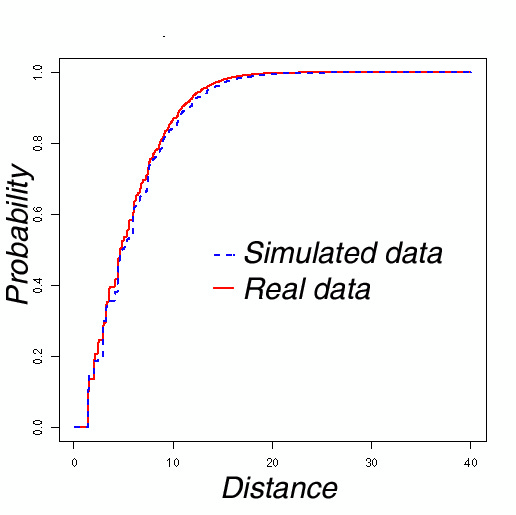Modeling of the gas diffusion layer in fuel cells
The aim of this project, which is a cooperation between the Institute of Stochastics and the ZSW (Zentrum für Solar- und Wasserstoffforschung) in Ulm, is a detailed analysis of the gas diffusion layer (GDL) in fuel cells. It has been started at the end of 2006.
The fuel cell technology provides an efficient way to convert hydrogen into electricity. This allows the replacement of oil products as energy carrier, e. g. in automobiles or submarines.
A key component of a fuel cell is the GDL. The GDL is on the one hand responsible for the transport of hydrogen and oxygen to the electrodes where the electrochemical reaction takes place. On the other hand its task is the removement of the water produced. In this context it is important that just the right water content is achieved because water is essential for the conductivity of the membrane, whereas excess of water in the GDL leads to a flooding of the pores which in turn limits current density. Hence the balance between water drainage and water storage is the key for a high performance. Additionally the GDL acts as a conductor for the produced electricity. For a better understanding of the physical processes within the GDL and for an optimization of its design, structural models are constructed with tools from stochastic geometry. These models form the base of the research. Various physical and statistical characteristics can be computed for them, which help our project partners to get a better understanding of the processes within fuel cells.
The research activities of Prof. Schmidt and Ralf Thiedmann are embedded into the BMBF-network "Röntgen- und Neutronenbasierte Untersuchungsmethoden für PEM-Brennstoffzellen", in the framework of the funding initiative "Netzwerke Grundlagenforschung erneuerbare Energien und rationelle Energieanwendung", (Federal Ministry of Education and Research (BMBF)).
Current topics for diploma thesis in this project can be found here.
Contact persons: Prof. Schmidt, Prof. Spodarev



